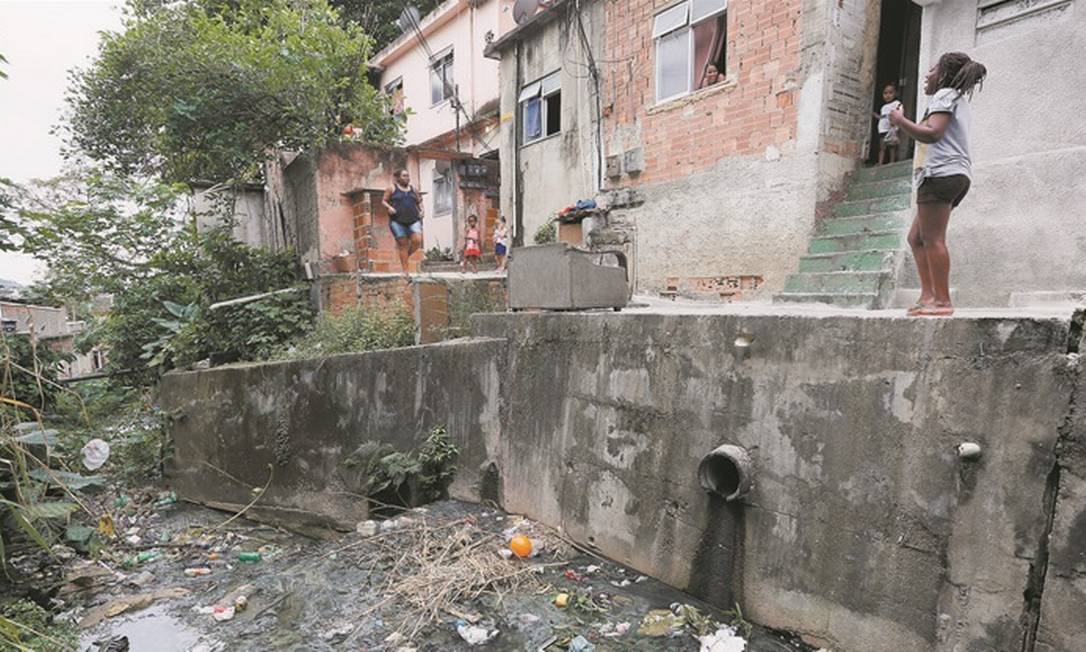by Caleb Treviño
RIO DE JANEIRO, BRAZIL – Rio de Janeiro is one of the most heavily visited cities in Latin America. The city received 1.27 million tourists in 2015. For such a city, you might expect it to have somewhat solid infrastructure, public works, or at the very least, a proper sanitation system. Rio de Janeiro, however, has a massive sanitation problem.
According to Trata Brasil, at least 30% of the city is not connected to a formal sanitation system, and only 39% of households in the city have a contract for sewage collection. In certain districts of Rio, such as Maricá, only 12% of residents receive sewage and sanitation services.
The problem is mainly confined to the favelas in Rio and carries serious repercussions such as health, social, and environmental problems. Another study by Trata Brasil found that every year, 217,000 workers in Rio miss work with gastrointestinal issues caused by poor sanitation. The study also showed that children with proper sanitation services had an 18% higher educational attainment than those that didn’t have it.

Favelas in Brazil have a long history of being ignored and neglected by their cities. From being denominated as illegal since their inception, to receiving very few public works, to mass eviction attempts, they’ve had to put up with suspicious government activity for a long time.
Another item can be added to the list: false hope. Presidents, governors, mayors, and other politicians have long promised to provide funding for the favelas in Rio.
“Morar Carioca”, probably the largest plan ever set forth to revitalize the favelas, promised to invest over R$8 billion (US$1.6 billion) into them and incorporate them into the city by 2020, further preventing evictions. The plan, which was celebrated and applauded at the time, was slowly abandoned after the promising mayor won his election.
Residents of Rio’s favelas have many reasons to be pessimistic about their sanitation problem. They also have many reasons to mistrust their local and state government, as the solution to their problem will most likely come with little help from the government.
Rio de Janeiro has over 1,000 favelas, with almost 2.5 million people. These favelas range from vibrant, beautiful communities to communities with slum-like conditions. And yet almost across the board, their access to sanitation averages around 30%.
However, São Paulo City has almost 2,500 favelas in and around its city and yet somehow boasts a 96% service rate for sewage disposal. Similarly, Belo Horizonte has achieved a nearly 100% service rate. How is this possible?
As is the case with struggling communities around the world, sometimes the best approach is community-run and community-focused. São Paulo uses what is known as a “condominium” system. Having been constructed by the people who live there, most homes in the favelas are not connected to massive sewage pipes as they have no appropriate sewage pipes.
Many have small pipes that allow for adequate plumbing and water services. Given that these neighborhoods, their infrastructure, and plumbing were built by communities, not government officials, they hold the knowledge of how they work best. A condominium system accepts various building styles and adapts to each favela on a case-by-case basis.
Instead of building massive pipes into every home in the favelas, which would prove very difficult, this system involves building just one massive pipe that runs through the center of most favela streets and then connecting residents’ smaller pipes to the large one. The only way to keep it running would be to allow residents to oversee and fix their own infrastructure. Cities such as São Paulo and Belo Horizonte have contracts with residents allowing them to have complete control over their sewage pipes.
As massive and pervasive as the sanitation problem in Rio is, there is a solution. A solution that is people-oriented, community-based, and allows residents to keep control of the utilities they built. It could help reduce sewage waste pollution, educational attainment, and overall inequality in Rio de Janeiro’s favelas.

